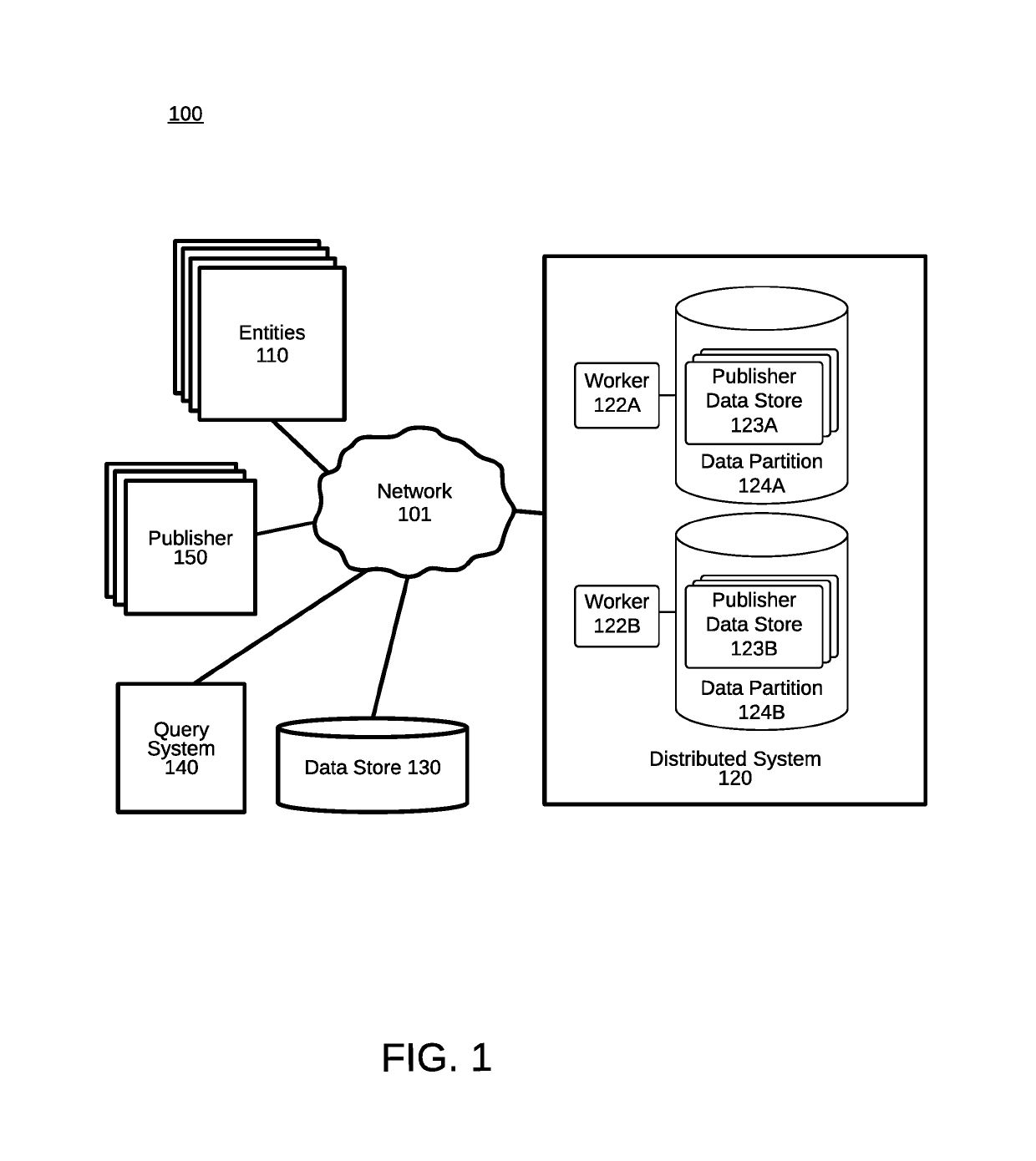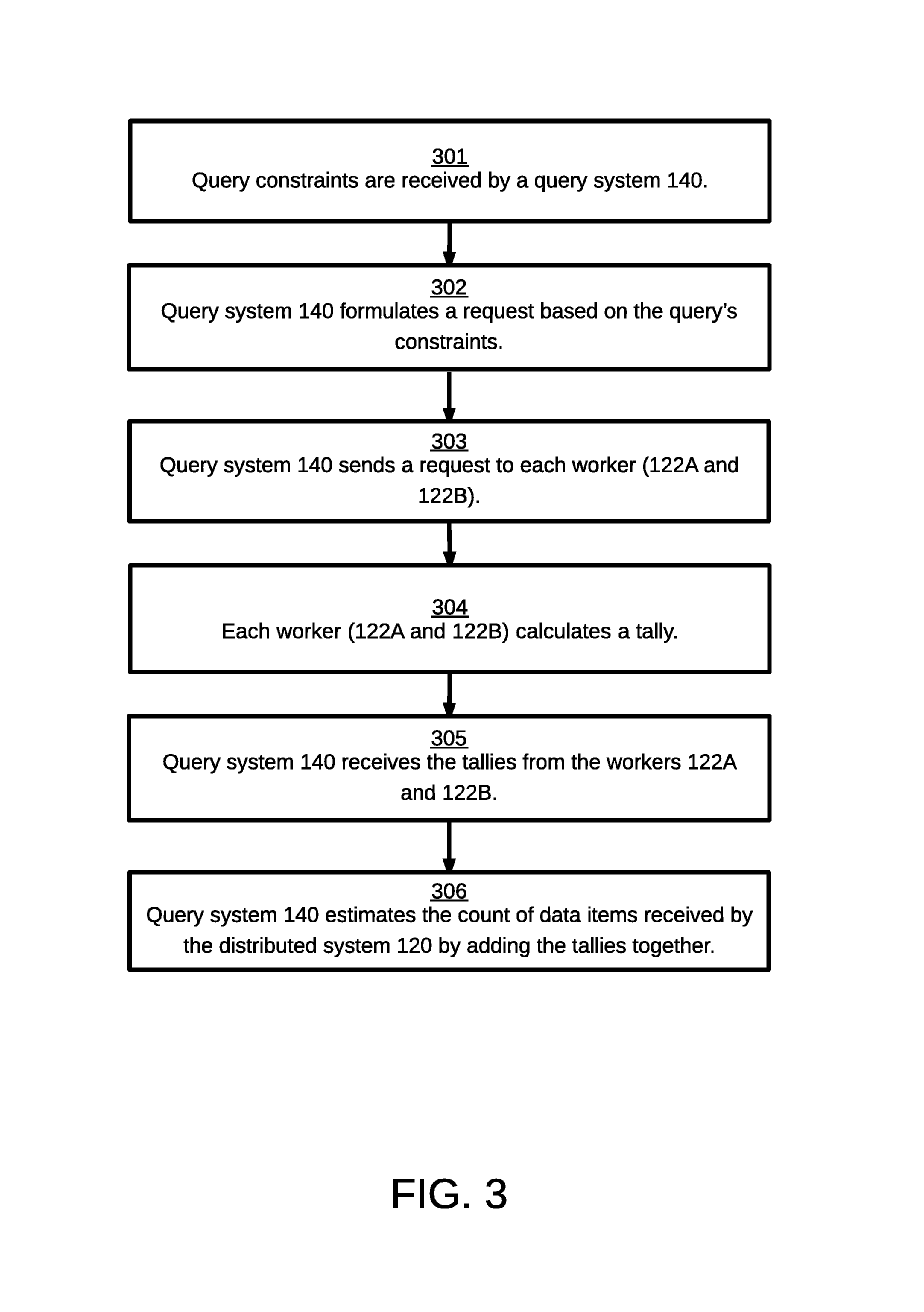Managing a distributed system processing a publisher's streaming data
a distributed system and publisher technology, applied in relational databases, instruments, marketing, etc., can solve the problems of inability to provide queries, inability to deploy and maintain distributed systems with reserved storage configured for peak data volumes, and high cost of deploying and maintaining distributed systems for peak data volumes. to achieve the effect of efficient response to local traffic spikes and lulls
- Summary
- Abstract
- Description
- Claims
- Application Information
AI Technical Summary
Benefits of technology
Problems solved by technology
Method used
Image
Examples
Embodiment Construction
[0014]Embodiments of the invention provide a solution to the problem of managing a distributed system processing a networked publisher's streaming data. Advantageously, by enabling each worker in the distributed system to select a sampling ratio based on historical information such as a historical sampling ratio or historical received data item volume, each worker can independently respond to spiky traffic patterns by keeping more (or less) of the publisher's streaming data. Unlike a distributed system with a system-wide fixed sampling ratio, an embodiment of the invention enables the storage of a small fraction of the publisher's streaming data by a worker receiving abundant streaming data, thereby conserving storage expense, while enabling a different worker exposed to sparse streaming data to store a larger fraction of the publisher's streaming data, thereby preserving a meaningful, representative sample. This solution provides an economical solution by limiting the storage requi...
PUM
 Login to View More
Login to View More Abstract
Description
Claims
Application Information
 Login to View More
Login to View More - R&D
- Intellectual Property
- Life Sciences
- Materials
- Tech Scout
- Unparalleled Data Quality
- Higher Quality Content
- 60% Fewer Hallucinations
Browse by: Latest US Patents, China's latest patents, Technical Efficacy Thesaurus, Application Domain, Technology Topic, Popular Technical Reports.
© 2025 PatSnap. All rights reserved.Legal|Privacy policy|Modern Slavery Act Transparency Statement|Sitemap|About US| Contact US: help@patsnap.com



